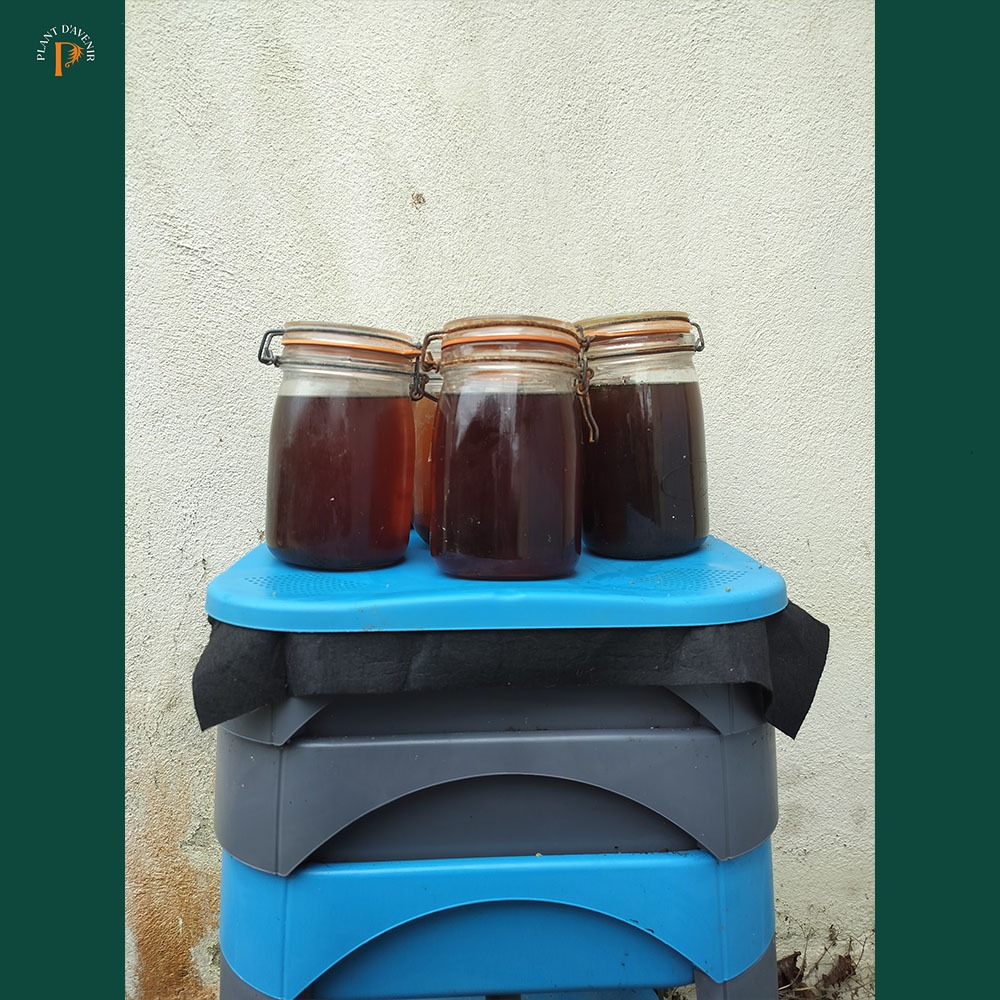No products in the cart.

Lombricompostage : guide pour un engrais écologique et zéro déchet

What is vermicomposting? How is it different from composting? What is it for? Why should I do it? Does it actually benefit plants? Me? The planet?
OK, you have come to the right place! I have the answer to some of these questions!
Let’s start slowly.
Composting and vermicomposting are two aerobic (requiring oxygen) bio-oxidative (involving a process in which biological systems use oxygen to break down organic compounds.) processes but they do differ in some respects.
🪱Difference between Composting and Vermicomposting🪱
Composting:
- Organic matter is transformed by microorganisms
- Requires human intervention for ‘activation’ – turning the compost pile to introduce oxygen into the system
Vermicomposting
- Organic matter is transformed by microorganisms and worms take part in the process.
- Does not require human intervention for ‘activation’ – the worms are turning over the compost all the time, exposing it to oxygen continuously
🤔So….. what does this mean? 🤔
This means that the earthworms are responsible for the fragmentation of the substrate while the microorganisms, both in the earthworm guts and in the feedstock, are responsible for the biochemical degradation of the organic matter. By fragmenting the substrate, the earthworms are increasing the total surface area to which the microorganisms are exposed, increasing the rate of decomposition significantly.
👀👓Things to Monitor with a VermiComposter👓👀
🧪 pH Level 🧪
A properly maintained worm bin should have a pH of 6.0 to 7.0, which is ideal for many types of composting worms. A hydrometer can and should be used to measure the pH in your worm bin.
A poorly managed worm bin pH can be fatal to your worms. Minor pH issues can cause sour odors from your worm bin, similar to vinegar, and ruin any worm compost already made.
If you notice your worm population fleeing the worm bin (like properly escaping from the top/bottom/any openings) for no obvious reason, then there is something amiss. Check the pH, the humidity, the food supply. But start with the pH.
💦 Moisture 💦
The worm bedding should always be moist enough to let the worms breathe. Dry bedding can cause the population of worms to suffocate, resulting in mass death and the end of your worm composter. So do watch out for that.
🫧 Oxygen 🫧
Worms do not have lungs. Oxygen diffuses from the air through their skin. As long as their skin is moist and they are exposed to enough oxygen, the worms will be able to breathe easily.
When worms eat, they tunnel through organic materials and soil. These tunnels create air holes which oxygenate the compost.
🥒🌱🍴What Do You Feed the Worms?🍴🌱🥒
So worms do not have any kind of teeth – they smush and mash food. This should give us some idea of what is going to worm for their feeding.
The basic guidelines in terms of texture are these:
- Soft
- Small pieces
- Somewhat moist (this will happen naturally if you collect scraps in the kitchen for a week and then feed them – decomposition happens pretty rapidly. Have you ever bought bananas and then wondered what happened when they turned black almost instantly?)
The general food group suggestions are these:
- Fruit + vegetable scraps (apple core, pumpkin seeds, zucchini head, corn husk, etc etc)
- Coffee grounds + tea bags
- Non-colored and shredded paper (this really needs to be shredded or torn up otherwise they don’t know what to do with it)
- Small chunks of bread and grains (lentils, rice, quinoa etc)
⛔The Forbidden Categories⛔
- Meat, Bones & Dairy (animal byproducts)
- Citrus fruits (pH imbalancing)
- Spicy or salty food (pH imbalancing)
- Sawdust (moisture retention)
- Grass clippings from treated lawns (chemicals)

📌Other Notes📌
⏰When?
Technically, you can start vermicomposting at any time of the year as long as you can control the temperature and moisture inside the bin.
Just make sure it is Cool&Moist in the Summer and Warm&Moist in the Winter
🔢How Many?
Generally you calculate between 230 to 700g of worms per 30cm2
❓Why?
The most well-documented effects of vermicompost of plants are: accelerated growth, higher resilience and a higher yield. On a personal note, I have noticed that :
- Seeds germinate more quickly
- The increased growth rate in the seedling stage and beyond
- Higher resistance to pathogens
- Pest deterrent qualities
All in all, it’s been a game changer for my plants – allowing them to thrive where others have hobbled along. And it reduces my waste – so it’s a nice circular economy to be a part of.


Our Choice : City Worms
This is one of best options as they are simple to maintain and harvest – for both a professional and an amateur.
Positive Points:
- Not too heavy, so if they need to be moved or rearranged, they’ll are easy to lift for one person.
- These are also a good solution for an indoor vermicomposting system, if that is what you are looking for.
- They were built to save space by literally stacking bins with holes in the bottoms to allow the worms to migrate up and leave castings and bedding behind.
- Easy to use both for the Worm Tea and for the Fertilizer.
Negative Points:
- Not extremely solid – if a tray is pulled too hard, there can be some wobbling
- Drain/spigot needs to be cleaned regularly as it can get blocked up
- Bottom tray should be cleaned as well as there can be debris that causes unpleasant smells.
